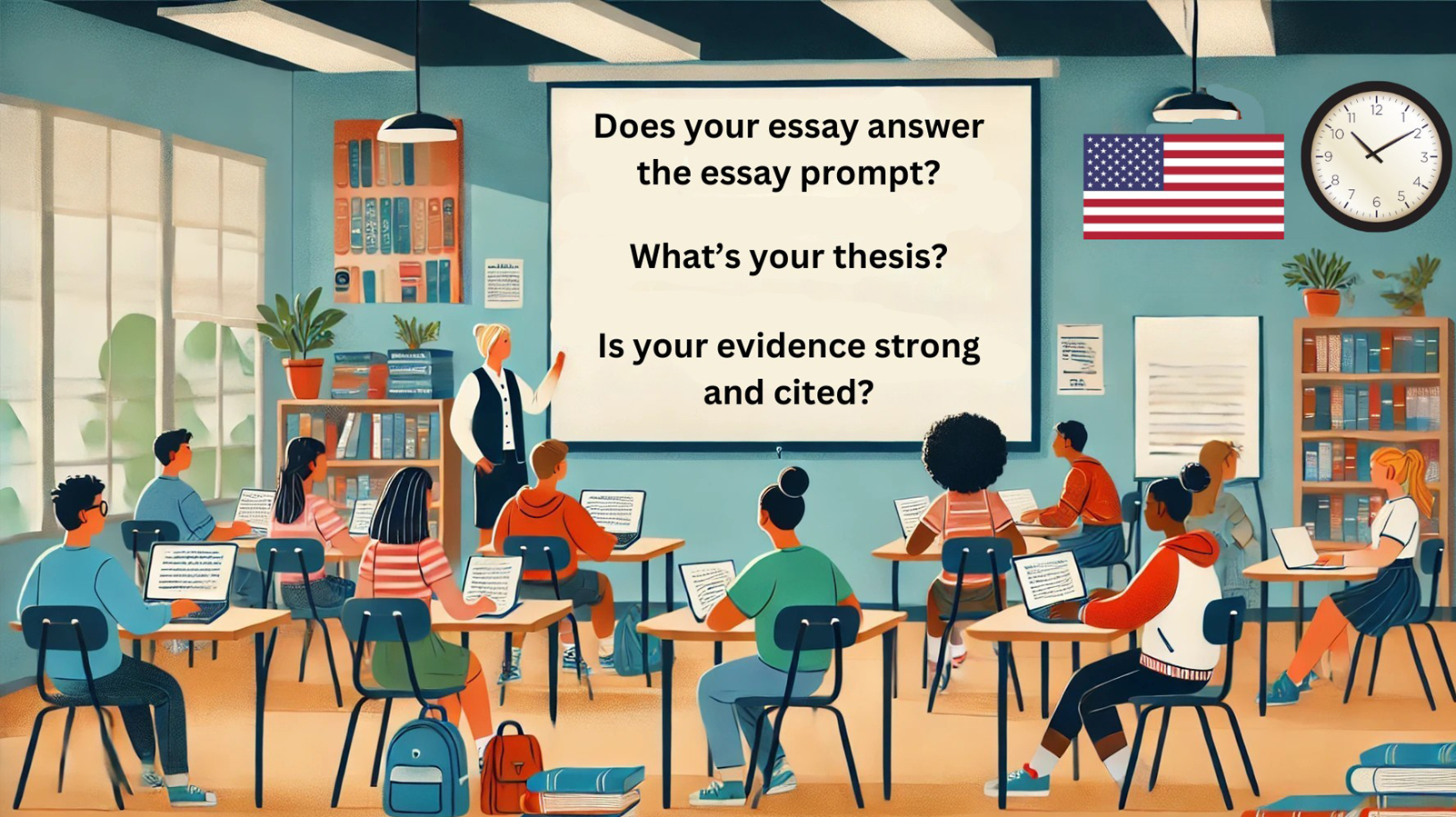Writing an essay can be daunting for students, especially when staring at a messy rough draft filled with half-formed ideas, awkward sentences, and incomplete thoughts. But as teachers, we know the rough draft is just the beginning of the process. It’s where the real work—and the real improvement—happens.
Helping students polish their rough drafts not only strengthens their essays but also teaches critical thinking, organization, and attention to detail—skills they’ll use throughout their lives. By hosting in-class writing sessions and workshopping, you’ll limit student access to AI and ensure they learn the skills needed to understand what makes a strong essay. (Because believe it or not, even AI-produced material needs a good edit! 😉 That means students must know what’s good and what’s not.)
And with opportunities like the Stossel in the Classroom Essay Contest, students have a real-world incentive to put in the effort and produce their best work.
Here’s how you can guide your students, step-by-step, to transform their rough drafts into polished, well-cited essays.
Step 1: Rethink the Big Picture
The first step in revising a rough draft is to zoom out and look at the essay as a whole. Encourage students to ask themselves:
- Does my essay answer the prompt? If students are writing for the Stossel contest or another specific assignment, they should check that their draft directly addresses the question or topic. It’s easy to stray off course during the writing process.
- What’s my thesis? A strong essay starts with a clear and focused thesis statement. If their draft lacks a thesis or includes multiple conflicting ideas, they’ll need to refine their main argument.
- Is my essay well-organized? Students should check that their ideas are presented logically. Each paragraph should support the thesis and follow a natural flow. Suggest creating an outline after the rough draft to ensure the structure makes sense.
Step 2: Strengthen the Evidence
Once the big picture is clear, students should focus on their supporting evidence. Many essays falter at this stage because students rely on weak or irrelevant examples, or worse, fail to properly credit their sources. Teach your students these key strategies:
- Check your sources: Ensure that the evidence is credible, relevant, and up-to-date. Students should avoid unreliable websites or outdated information. Introduce them to trusted sources like academic databases or reputable news outlets.
- Use specific examples: Encourage students to go beyond vague statements by backing up their arguments with concrete facts, data, or anecdotes. Strong evidence can make the difference between a convincing essay and a forgettable one.
- Fact-check everything: Teach students the importance of verifying the accuracy of their sources. If they include a statistic or quote, they should double-check it for accuracy and credibility. (Just because it’s listed on Brainy Quotes doesn’t mean it’s accurate!)
Step 3: Properly Cite Sources
Many students struggle with citations, but learning how to properly credit their sources is a crucial part of writing. Not only does it help them avoid plagiarism, but it also adds credibility to their work.
- Understand the format: Whether it’s MLA, APA, or Chicago style, make sure students know the requirements for their citations. Provide resources or templates for them to follow.
- Create a Works Cited page: Teach students to keep track of their sources as they research, so they can compile their works cited page easily at the end.
- Incorporate in-text citations: Remind students to include in-text citations for any quote, statistic, or paraphrased idea that isn’t their own. A simple formula like “According to [source]…” can help them get started.
Citing sources properly demonstrates professionalism and respect for intellectual property—important lessons that go far beyond the classroom.
Step 4: Revise for Clarity and Style
With the content and citations in place, it’s time to focus on clarity and style. This step helps students refine their voice and improve the readability of their essay. Encourage them to:
- Eliminate fluff: Students often add extra words to hit a word count, but unnecessary sentences can distract from their message. Challenge them to remove anything that doesn’t directly support their argument. They must still hit the word count! If their essay is too short after removing filler words, encourage them to create a new paragraph or section.
- Vary sentence structure: Teach students to mix short and long sentences for better rhythm and flow. Too many short sentences can feel choppy, while long sentences can become overwhelming.
- Avoid jargon: Remind students to write clearly for their intended audience. Fancy words aren’t always better if they muddle the meaning.
- Read aloud: Reading their essay out loud (or have the computer read it out loud while they follow along) can help students catch awkward phrases, typos, and missing words. It’s one of the simplest but most effective tools for self-editing.
Step 5: Polish with Editing
Editing is the final step, and it’s all about precision. This is where students should focus on grammar, punctuation, and formatting. Provide them with these tips:




